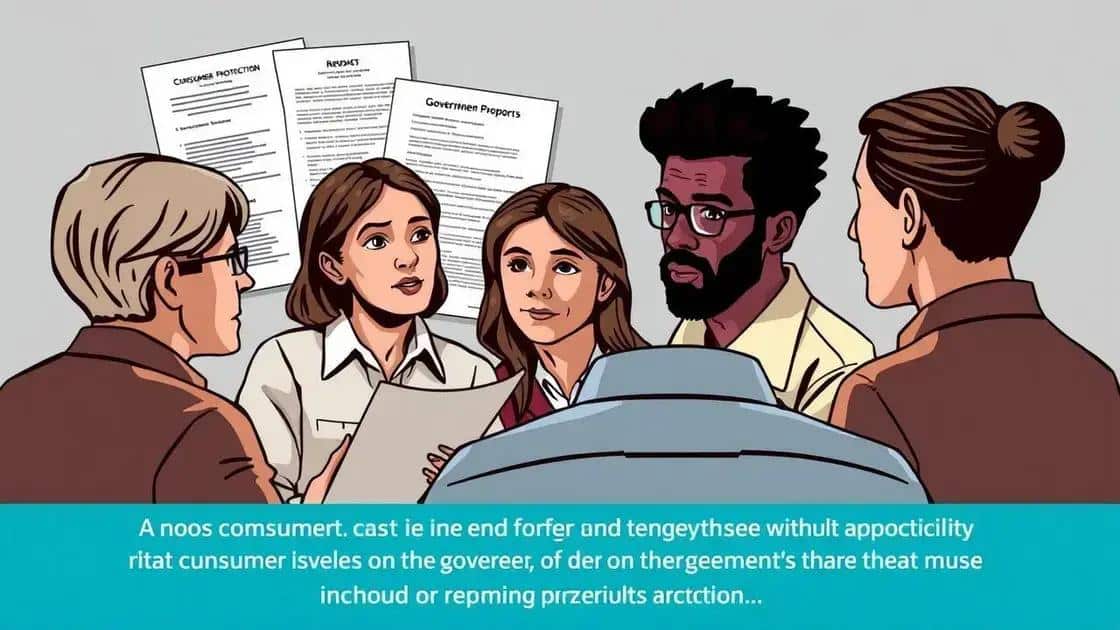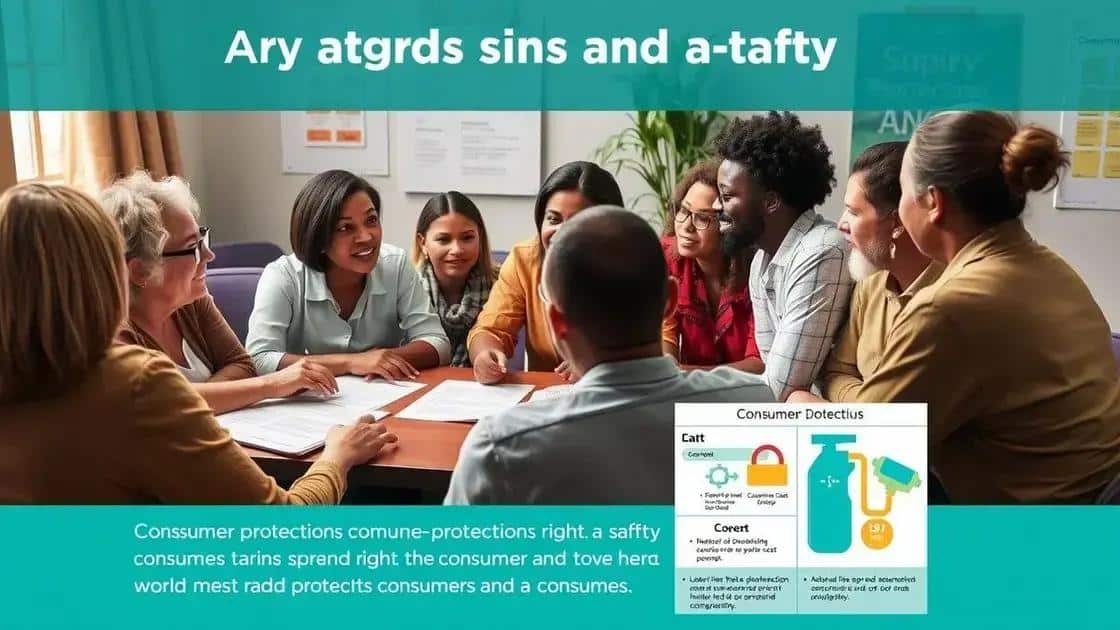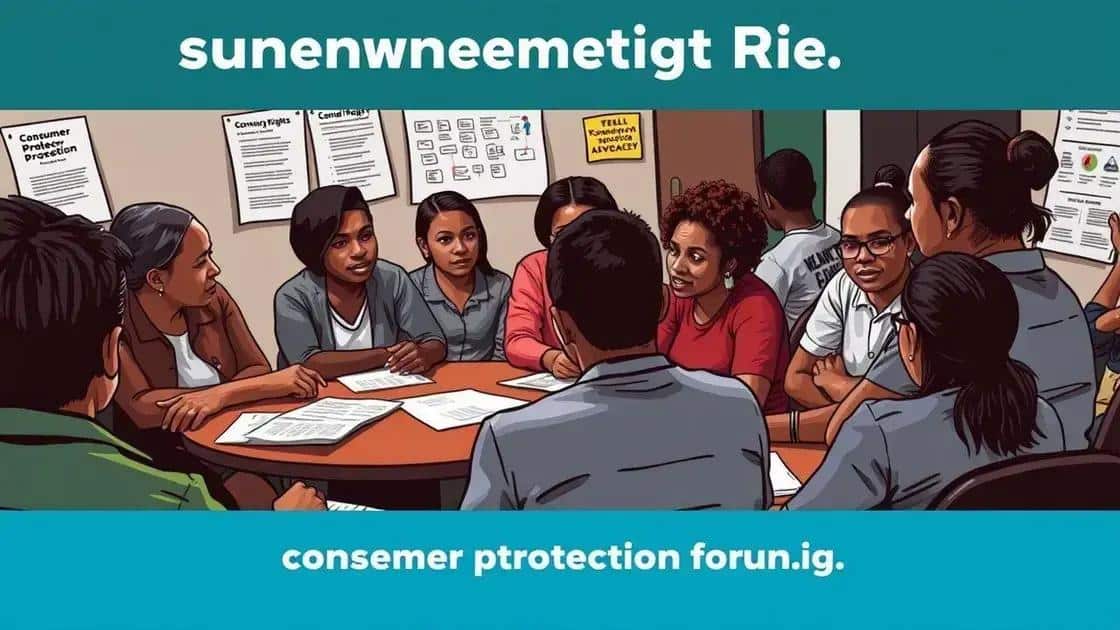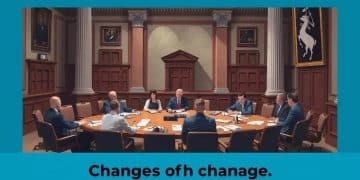Alarming reductions in federal consumer protection funding

Anúncios
Alarming reductions in federal consumer protection funding jeopardize consumer safety and rights, leading to less oversight, increased risks from unsafe products, and a diminished ability for enforcement agencies to support the public effectively.
Alarming reductions in federal consumer protection funding are raising concerns among consumers and advocates alike. What does this mean for your rights and safety? Let’s dive into the implications and explore what can be done.
Anúncios
Understanding recent funding cuts
In recent months, there have been significant reductions in federal consumer protection funding. Understanding the reasons behind these cuts is crucial for consumers and advocates. Many are concerned about how these changes will impact safety measures and regulations designed to protect the public.
The reasons for funding cuts
Funding has decreased due to various factors, including budget cuts and shifting priorities at the federal level. These decisions often stem from broader economic issues and political debates about government spending.
Anúncios
- Budget constraints faced by the government
- Changes in political administration priorities
- Shifts toward deregulation
As these funding cuts take effect, consumers may notice a decline in the effectiveness of various consumer protection programs. Without sufficient financial resources, these programs struggle to maintain their operations and reach.
Impact on enforcement and regulation
Reduced funding leads to fewer resources for enforcement agencies. This means that investigations into unfair practices may slow down or stop altogether. When agencies cannot effectively police the market, harmful products can slip through, jeopardizing consumer safety.
Consumers need to be aware of how these cuts can affect their rights. With less oversight, companies might engage in practices that compromise consumer safety and transparency.
- Increased risk to consumers from unmonitored products
- Higher chances of fraud and scams
- Decreased public trust in consumer protection agencies
Maintaining strong consumer protection measures is vital for a fair marketplace. Therefore, understanding these cuts is essential for everyone who cares about their rights.
Impacts on consumer safety and rights

The impacts of reductions in federal consumer protection funding are widespread and significant. When funding decreases, agencies are less equipped to carry out their mission of ensuring safety and fairness for consumers.
Risks to consumer safety
One major effect of the funding cuts is the increased risk to consumer safety. With fewer resources, enforcement agencies struggle to monitor products effectively. This can lead to dangerous items reaching the market without proper safety checks.
- Higher chances of harmful products being sold
- Reduced testing and inspection of goods
- Weaker enforcement of safety regulations
Consumers depend on these protections to keep harmful products away from their homes. So, when budgets shrink, the potential dangers increase, putting lives at risk.
Impact on consumer rights
In addition to safety risks, these funding cuts can undermine consumer rights. Without sufficient resources, agencies may not have the capacity to handle complaints or enforce regulations. This can leave consumers feeling powerless when they face unfair practices.
Many people may not feel confident in reporting issues or seeking help if they believe that the system is broken. It is crucial for consumers to understand that their rights are still important, despite these challenges.
- Decreased responsiveness to consumer complaints
- Reduced visibility of consumer rights information
- Challenges in pursuing legal actions against unfair practices
Ultimately, these impacts highlight the need for strong advocacy and public awareness. Consumers need to stay informed about their rights and the implications of reduced funding on their safety and well-being.
How organizations are responding
Organizations are becoming increasingly aware of the effects of reductions in federal consumer protection funding. Many are stepping up to respond to these challenges in various ways. Their efforts aim to fill the gap left by government cutbacks and to protect consumer interests.
Advocacy and awareness campaigns
Many consumer advocacy groups are launching campaigns to raise awareness about the implications of funding cuts. These initiatives focus on educating the public regarding their rights and the importance of consumer protections. Educated consumers are more likely to demand change and hold companies accountable.
- Educational workshops for consumers
- Online resources and toolkits
- Social media campaigns to spread awareness
These actions are crucial as they empower individuals to stand up for their rights and make informed decisions.
Legal actions and support
Organizations are also exploring legal avenues to challenge unfair practices that may arise due to weakened regulations. By standing together, they create a buffer for consumers against potential exploitation.
Many groups provide resources for consumers facing difficulties. Legal aid and pro bono services are becoming more common as organizations strive to protect consumer rights.
- Increased access to legal support for consumers
- Collaboration with attorneys to address consumer issues
- Creating legal defense funds for consumers facing injustice
These efforts not only support individuals but also foster a sense of community among consumers trying to navigate a challenging landscape.
Collaboration and partnership efforts
Some organizations are partnering with businesses and government entities to advocate for better policies. Collaboration among different stakeholders helps bring visibility to the importance of consumer protections. By advocating for policy changes, these partnerships initiate discussions that can lead to restored funding and resources.
Working together builds a stronger voice in the fight for consumer rights, ensuring that the public’s needs remain a priority.
Future outlook for consumer protection funding

The future outlook for consumer protection funding presents a mix of challenges and opportunities. Understanding these dynamics is important for consumers and advocates alike. With increasing awareness about the need for effective protections, there is hope for change.
Potential for policy changes
As public concern grows over the impact of funding cuts, there may be a push for policy changes. Lawmakers could face pressure to restore funding for consumer protection agencies. Increasing public engagement and advocacy can play a key role in this process.
- Advocacy groups pushing for renewed funding
- Public petitions to show demand for protection
- Increased media coverage of consumer issues
As these efforts gain momentum, they may influence political priorities and funding allocations.
Emerging technologies and resources
Technology offers possibilities for enhancing consumer protection even in a tighter budget environment. Innovations in data analytics and artificial intelligence can help streamline processes and improve the effectiveness of consumer protection efforts.
By leveraging technology, agencies can optimize their resources, allowing them to provide better oversight and support for consumers. This approach may involve developing new tools for monitoring products and services in the market.
- Using data to identify trends in consumer safety
- Implementing AI for efficient complaint handling
- Enhancing online platforms for consumer engagement
These advancements could lead to a more proactive stance against unfair practices, even with limited funding.
Community and grassroots involvement
The role of local communities will be crucial in shaping the future of consumer protection funding. Grassroots efforts have the potential to unite individuals and groups advocating for better protections. When communities strengthen their voices, they can make a collective impact.
This involvement might include organizing awareness events, collaborating with local leaders, and educating fellow citizens about their rights. Additionally, neighbors supporting each other can create a safety net for consumers.
Such grassroots actions reinforce the idea that consumer protection is not solely the responsibility of the government but a shared community effort.
FAQ – Frequently Asked Questions About Federal Consumer Protection Funding
What is consumer protection funding?
Consumer protection funding refers to financial resources allocated to government agencies that enforce laws and regulations to safeguard consumer rights and safety.
How do reductions in funding affect consumers?
Reduced funding can lead to less oversight, fewer resources for enforcement, and a higher risk of unsafe products reaching the market, ultimately jeopardizing consumer safety.
What role do advocacy groups play in this issue?
Advocacy groups raise awareness about the importance of consumer protections, push for policy changes, and provide resources to help consumers understand their rights.
How can consumers get involved to help improve funding?
Consumers can participate in petitions, join local advocacy groups, and engage in community outreach to pressure lawmakers to restore and enhance consumer protection funding.






